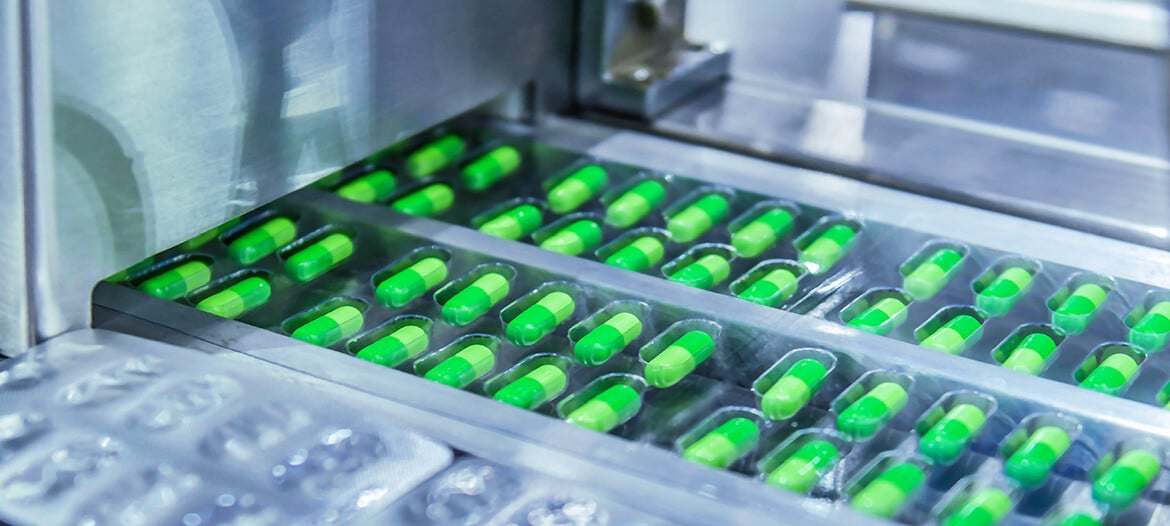Advanced Technology, Automation Are Reshaping Life Science Logistics
At a recent Leading Minds Seminar in Boston, pharma and life science industry leaders gathered to discuss how advanced technologies are transforming life science logistics—from real-time temperature monitoring and process automation to interoperability and predictive analytics.
Moderated by Patrik Senn, Head of Product Management at ELPRO, the expert panel featured Henry Ames, General Manager of Logistics Orchestration at TraceLink; Paul Della Villa, Director of Digital Solutions and Services at Cold Chain Technologies; and Jeff Lander, Global Logistics Engineering Lead at Moderna.
From Passive Monitoring to Real-Time Intelligence
Opening the discussion, Patrik Senn (ELPRO) emphasized that the industry is balancing rapid innovation with strict regulatory expectations. “Five to ten years ago, release processes were largely manual,” he said. “By automating workflows, we’ve helped customers reduce release times from many days to just minutes.”
Jeff Lander (Moderna) reflected on the pandemic’s impact: “We’ve moved from simple chemical indicators and passive loggers to full IoT and real-time monitoring. The challenge now is how we extract insights that are predictive and actionable rather than reactive.”
Senn added that flexibility will define the next phase of monitoring. “We’re now supporting mixed technologies—passive, Bluetooth, and real-time loggers—on a single platform,” he said. “That enables customers to balance cost, risk, and responsiveness while paving the way for predictive analytics.”
A Mixed Technology Ecosystem
Henry Ames (TraceLink) noted that full real-time adoption remains a gradual evolution. “Not everything will move to real time overnight,” he said.
“The cost implications are significant, and reuse programs remain complex. But wireless technologies will solve a primary problem—manual data retrieval at the end of a shipment.”
Henry Ames, TraceLink
Ames also noted that advancements in the roll-out of LoRa technology offer the promise of near real-time supply chain visibility but at a much lower price point.
He also credited ELPRO’s history of innovation: “They were the first to bring USB-enabled data loggers to market. That same engineering spirit is now driving the move toward wireless ecosystems.” And, it is worth noting that the use of conventional dataloggers with USB download capabilities largely remains the industry standard.
Paul Della Villa (Cold Chain Technologies) added that each therapy segment requires a tailored solution. “A GLP-1 therapy shipped to a patient’s home has very different needs than a cell and gene therapy,” he said. "We’ll see a range of monitoring devices—cellular, reusable, recyclable—aligned to each specific use case."
Data Overload and the Human Element
Despite the flood of new technology, Lander pointed to a cultural challenge. “The life sciences sector is cautious about being first,” he said. “Once you implement IoT monitoring, you have more visibility—and that creates the responsibility to act."
"The key is turning data into action.”
Jeff Lander, Moderna
Panelists agreed that successful adoption depends not only on devices but also on processes and people ready to interpret and respond to what those devices reveal.
Business Priorities: Visibility, Automation, and Interoperability
When asked about customer priorities, Senn identified three consistent themes: visibility, automation, and interoperability. “Timely, accurate data is essential,” he said. “But it’s not just about alarms—it’s about automating data flow across systems and ensuring interoperability through APIs.” He also highlighted the need for flexible business models:
“Every supply chain is unique. Whether in clinical trials, commercial distribution, direct-to-patient delivery, or the last mile—our customers face very different challenges. That’s why both technology and business models must be flexible, supporting modern 'rent-instead-of-buy' approaches that adapt to each use case.”
Patrik Senn, ELPRO
Digital Investment Trends: Catching Up to Other Industries
Drawing from the Gartner Supply Chain Symposium in Barcelona, Ames observed that while life sciences led in attendance, it still lags behind in digital maturity. “Manual processes remain pervasive,” he said. “But the interest and investment in supply chain technology are accelerating.” Ames noted that technology advancements support multi-enterprise supply chain collaboration across the entire pharmaceutical supply chain. Companies like TraceLink are leveraging proven platforms originally developed to enable compliance with serialization requirements, now provide seamless interoperability across supply chain partners for an expanding set of digital supply chain transactions.
He identified three drivers shaping digital investment:
- Resilience – rapid response to disruptions.
- Visibility – near real-time understanding of product condition and location.
- Sustainability – reducing waste through smarter reuse and resource optimization.
The Road Ahead: Predictive, Connected, and Circular
Looking forward, panelists agreed that predictive intelligence will define the next decade. Real-time monitoring, AI, and integrated data platforms will converge to enable proactive interventions before excursions occur.
“We’re entering a phase where technology, business models, and patient expectations all converge. The winners will be those who standardize data exchange, simplify user experience, and act decisively on real-time insights.”
Paul Della Villa, Cold Chain Technologies
Key Takeaways
- From passive to real-time: COVID-19 accelerated IoT adoption and workflow automation.
- Tailored technology mix: Different therapies require different monitoring strategies.
- Interoperability is critical: Seamless data flow between partners drives efficiency.
- Adoption barriers remain: Cost, usability, and organizational change still slow progress.
- Predictive analytics is next: The future lies in turning data into preventive action.
- Standardization and collaboration: Shared frameworks will enable scalable, compliant innovation.
Frequently Asked Questions (FAQ)
1. What is driving the shift from passive to real-time temperature monitoring in pharma logistics?
The primary drivers are speed, accuracy, and risk reduction. Real-time monitoring enables continuous visibility of product conditions, allowing logistics teams to detect and prevent temperature excursions immediately rather than after delivery. The COVID-19 pandemic accelerated this trend, proving that faster data access can dramatically shorten release times and improve product integrity.
2. Will passive data loggers disappear completely?
Not anytime soon. According to Henry Ames (TraceLink), cost and reuse logistics mean that a mixed technology ecosystem will continue. Passive or Bluetooth devices remain appropriate for lower-risk or short-distance shipments, while real-time IoT sensors are ideal for high-value or patient-critical therapies.
3. What are the biggest challenges in adopting real-time or IoT-based monitoring?
Challenges include cost management, system integration, and change management within organizations. As Jeff Lander (Moderna) noted, “Once you have real-time visibility, you have to be prepared to act on it.” Building the processes and teams to interpret and respond to live data is often as complex as implementing the technology itself.
4. How does automation improve cold chain efficiency?
Automation reduces manual steps such as data downloads, validation reviews, and report generation. Patrik Senn (ELPRO) highlighted that automation can cut product release times from days to minutes by connecting monitoring systems directly to quality and logistics workflows.
5. What role does interoperability play in the future of pharma supply chains?
Interoperability, the ability for devices, systems, and partners to share data seamlessly, is essential for end-to-end visibility. As companies integrate sensors, warehouse management systems, and carrier networks, standardized data exchange (via APIs and shared frameworks) ensures real-time insights reach all decision-makers simultaneously.
6. How are sustainability and reuse influencing technology choices?
Manufacturers and logistics providers are increasingly designing reusable or recyclable monitoring devices to align with corporate sustainability goals. As Paul Della Villa (Cold Chain Technologies) explained, “We’ll see more reusable and recyclable electronics that balance performance with environmental responsibility.”
7. What’s next for digital transformation in life science logistics?
The next frontier is predictive analytics—using AI and historical data to anticipate risks before they occur. Combined with automation and interoperability, predictive systems will help organizations move from reactive to preventive quality management across the supply chain.







Leave a Comment